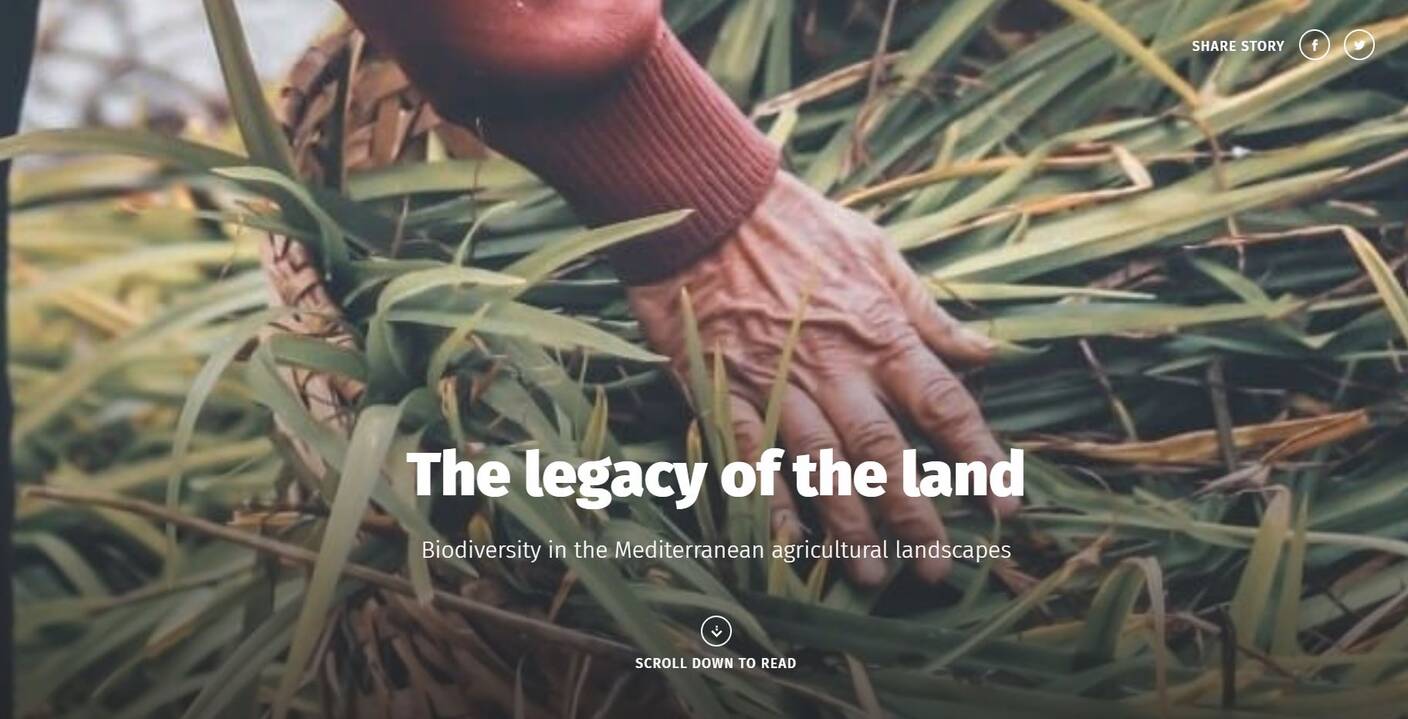The Legacy of the Land
By Mercedes Muñoz, IUCN Centre for Mediterranean Cooperation
The story map “The Legacy of the Land” is a visual tool to communicate the importance of biodiversity in agricultural landscapes. Cereals, vegetables, citrus fruits, olive orchards and vines. The fertile grounds of the Mediterranean have been harvested for centuries, feeding civilisations, shaping landscapes, cultures and societies. With their practices, farmers, shepherds and fishermen have built agricultural wisdom across generations, influencing the unique biodiversity of the Mediterranean region.
Today, the Mediterranean is under intense pressure from a variety of human activities and has become a priority for conservation. Mediterranean biodiversity is being lost at an unprecedented rate, and one of the primary drivers of this decline, particularly in terrestrial environments, is known to be agriculture. However, could agriculture also be part of the solution?
An inextricable bond
“Biodiversity is the basis of agriculture”
From vertebrates to microorganisms, agricultural landscapes hold a tremendous range of species that have a profound and positive impact on Earth’s habitability. Henceforth, sustainable and well-managed agriculture systems can actually play a key role in improving biodiversity conservation. We can see many examples of the potential of these practices today.
Read more: The Legacy of the Land

